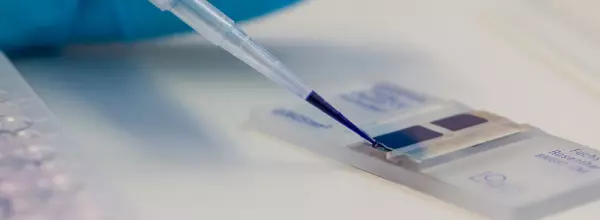
Biological Safety Testing of Medical Devices
Biological Evaluation of Medical Devices / Biocompatibility TPMD provides a highly sophisticated...
Portal and digital medical technology fair of the largest MedTech cluster in Germany

Biological Safety Testing of Medical Devices
Biological Evaluation of Medical Devices / Biocompatibility TPMD provides a highly sophisticated...

In some cases, biocompatibility testing isn't required for a medical device. For example, there are devices made of materials with well-characterized physical and chemical properties that have been used in legally marketed medical devices for decades. However, many other medical devices are still under investigation, and it's important to understand the risks and benefits of biocompatibility testing before beginning the development process. Here's a breakdown of what biocompatibility testing is and how it can help you decide whether or not a device is appropriate.
The FDA recommends that biocompatibility testing be done on both sterilized and unsterilized devices. Using coupons is a common practice, which allows a company to test an article without having to pay for a professional lab. The test articles should undergo similar manufacturing processes and have similar chemical, physical, and surface properties as the actual medical device. In addition, the samples should have similar component materials and ratios to ensure that the device is compatible with the body's systems.
When biocompatibility testing is performed on medical devices, it ensures that they are compatible with the body. The purpose is to ensure that the device is compatible with human beings. If the device causes any type of adverse reaction, the patient would be unable to tolerate it. Hence, the process of biocompatibility testing is critical to ensure that medical devices are safe. If a medical device is biocompatible, then its use is highly beneficial for patients.
During the testing process, the materials and processes of the medical device are characterized. This allows the biocompatibility evaluation to be more precise. A good biocompatibility toxicologist should be integrated into the product development team from the very beginning. In some cases, the device's design is incompatible with the predicate device, while in other cases, the device is identical to the predicate. The manufacturer also has to demonstrate that there are no similarities in their materials and manufacturing process.
Some devices may not be biocompatible with patients. To evaluate the biocompatibility of a device, it is important to assess the material. If the medical device is made of polymer, the manufacturer should consider the risks of exposure during the manufacturing process. In addition, the risk of the device is determined by the level of contact between the device and the body. The device should be certified to be biocompatible with the user. A medical device that is non-compatible with their patients should not be used in this situation.
Some medical devices need biocompatibility testing. A pacemaker or heart valve may contain a subcutaneous pulse generator, cardiac leads, and a cardiovasculature. These devices are considered tissues and blood contact devices. Hence, the endpoints for biocompatibility testing should be relevant to the intended use and material of the device. If a device requires additional tests, the test laboratory must be AAALAC-accredited.
Become a digital exhibitor yourself in the online portal of the largest and best-known MedTech cluster region in Germany and inform the world of medical technology about your products and services as well as about news, events and career opportunities.
With an attractive online profile, we will help you to present yourself professionally on our portal as well as on Google and on social media.